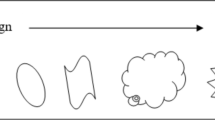Abstract
In this paper we present a novel method for reducing false positives in breast mass detection. Our approach is based on using the Two-Dimensional Principal Component Analysis (2DPCA) algorithm, recently proposed in the field of face recognition, in order to extract breast mass image features. In mammography, it is well known that the breast density measure is highly related to the risk of breast cancer development. Hence, we also propose to take advantage of a previous breast density classification in order to increase the overall breast mass detection performance. We test our approach using a set of 1792 RoIs manually extracted from the DDSM database. Moreover, we compare our results with several existing methods. The obtained results demonstrate the validity of our approach, not only in terms of improving the performance but being a generalizable, simple, and cost-effective approach.
Preview
Unable to display preview. Download preview PDF.
Similar content being viewed by others
References
American Cancer Society: Breast cancer: facts and figures. 2003-04. ACS (2003)
Kopans, D.: Breast Imaging. Lippincott-Raven, Philadelphia (1998)
Qian, W., Sun, X., Song, D., Clarke, R.A.: Digital mammography - wavelet transform and kalman-filtering neural network in mass segmentation and detection. Acad. Radiol. 8, 1074–1082 (2001)
Tourassi, G.D., Vargas-Vorecek, R., Catarious, D.M., Floyd, C.E.: Computer-assisted detection of mammographic masses: A template matching scheme based on mutual information. Med. Phys. 30, 2123–2130 (2003)
Yang, J., Zhang, D., Frangi, A.F., Yang, J.: Two-dimensional PCA: a new approach to appearance-based face representation and recognition. IEEE Trans. Pattern Anal. Machine Intell. 26, 131–137 (2004)
Turk, M.A., Pentland, A.P.: Eigenfaces for recognition. J. Cogn. Neuro. 3 (1991)
Ho, W.T., Lam, P.W.T.: Clinical performance of computer-assisted detection (CAD) system in detecting carcinoma in breasts of different densities. Clinical Radiology 58, 133–136 (2003)
Wolfe, J.N.: Risk for breast cancer development determined by mammographic parenchymal pattern. Cancer 37, 2486–2492 (1976)
Oliver, A., Freixenet, J., Martí, R., Zwiggelaar, R.: A comparison of breast tissue classification techniques. In: Larsen, R., Nielsen, M., Sporring, J. (eds.) MICCAI 2006. LNCS, vol. 4191, pp. 872–879. Springer, Heidelberg (2006)
Oliver, A., Martí, J., Martí, R., Bosch, A., Freixenet, J.: A new approach to the classification of mammographic masses and normal breast tissue. In: IAPR Int. Conf. on Patt. Rec., vol. 4, pp. 707–710 (2006)
American College of Radiology: Illustrated Breast Imaging Reporting and Data System BIRADS. 3rd edn. American College of Radiology (1998)
Quinlan, J.: C4.5: Programs for Machine Learning. Morgan Kaufmann, New York (1993)
Metz, C.: Evaluation of digital mammography by ROC analysis. In: Int. Work. on Dig. Mammography, pp. 61–68 (1996)
Heath, M., Bowyer, K., et al.: The Digital Database for Screening Mammography. In: Int. Work. on Dig. Mammography, pp. 212–218 (2000)
Sahiner, B., Chan, H.P., et al.: Image feature selection by a genetic algorithm: Application to classification of mass and normal breast tissue. Med. Phys. 23, 1671–1684 (1996)
Chang, Y.H., Hardesty, L.A., et al.: Knowledge-based computer-aided detection of masses on digitized mammograms: A preliminary assessment. Med. Phys. 28, 455–461 (2001)
Author information
Authors and Affiliations
Editor information
Rights and permissions
Copyright information
© 2007 Springer Berlin Heidelberg
About this paper
Cite this paper
Oliver, A., Lladó, X., Martí, J., Martí, R., Freixenet, J. (2007). False Positive Reduction in Breast Mass Detection Using Two-Dimensional PCA. In: Martí, J., Benedí, J.M., Mendonça, A.M., Serrat, J. (eds) Pattern Recognition and Image Analysis. IbPRIA 2007. Lecture Notes in Computer Science, vol 4478. Springer, Berlin, Heidelberg. https://doi.org/10.1007/978-3-540-72849-8_20
Download citation
DOI: https://doi.org/10.1007/978-3-540-72849-8_20
Publisher Name: Springer, Berlin, Heidelberg
Print ISBN: 978-3-540-72848-1
Online ISBN: 978-3-540-72849-8
eBook Packages: Computer ScienceComputer Science (R0)




